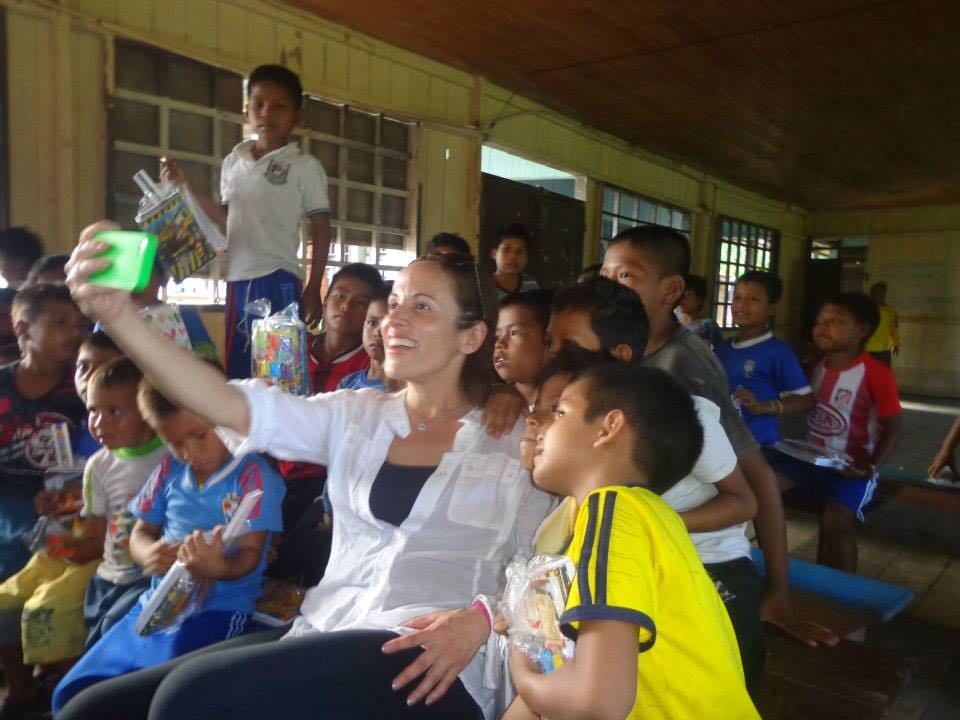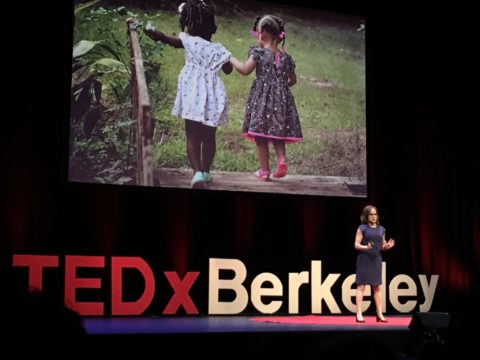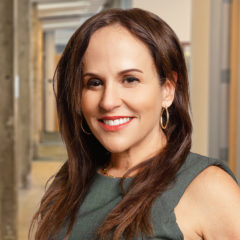
Adrianna Quintero is Energy Foundation’s Senior Director of Diversity, Equity, and Inclusion. This blog post is based on a TEDx talk she gave in Berkeley, California, titled “Some of My Best Friends Are Green.”
Since the beginning of time, mothers have worried about their children: Will they be safe? Will they be loved? Will they have a future?
This last question is one that, I’ll admit, I never thought I would be asking myself. But today, as we face the reality that the world must take “rapid and far-reaching” unprecedented changes by 2030 to avoid the worst impacts of climate change, it’s hard not to wonder: How will our children survive climate change?
When I began environmental work 20 years ago, the significance of climate change was just emerging and we thought the most serious impacts would come in the distant future. Today, that timescale has contracted, and it increasingly feels like even the term “climate change” doesn’t do this crisis justice.
I watched with horror as kids my own age played in the frothing waterway that I knew was dangerously polluted. I wanted to scream at them to get out, but the bus drove on.
Young people everywhere, including my own kids, are mad and scared. They see an unspooling web of problems, from superstorms to wildfires, to plastic-choked oceans, to threatened food supplies—all driven by our dependence on fossil fuels. They simply cannot understand why we are not doing more.
I can understand this sense of urgency and frustration. I still remember the moment when the urgency of environmental pollution became clear to me. My family had just moved to Bogota, Colombia from California, and while on a school field trip, our bus followed a river of pollution. At its source, factories and dumps all discharged into the flowing water. Once in the countryside, it became a river of foam. I watched with horror as kids my own age played in the frothing waterway that I knew was dangerously polluted. I wanted to scream at them to get out, but the bus drove on.
That experience planted the seeds of my career, touching off an urgency to act that still drives me. It also brought home a reality that remains true today: that environmental harms—like climate change—hurt people of color, women and girls, and the poor, first and worst.
Despite this, the environmental movement has been slow to recognize the importance of meaningful diversity and the value of true inclusion of the voices and perspectives of those most impacted.
The assumption that people of color don’t care, that our voices can’t influence decision-makers, has persisted. The assumption is wrong. We care and we care a lot. Survey after survey shows that communities of color consistently demonstrate the highest level of support for fighting climate change and in support of clean energy policies.
We care because we see our children suffering from asthma triggered by the endless air pollution being pumped into our neighborhoods, worsened by climate change. We care because we know that when catastrophe strikes—as it did with Hurricane Harvey in Texas, Hurricane Maria in Puerto Rico, and so many other mega-storms—help may never come. We care because we suffer the highest energy burden, and know nobody should have to choose between feeding their families or heating their homes. We care because so many of us are 1 or 2 degrees of separation away from a loved one who is enduring the impacts of climate change now, or who already has been directly impacted by climate change and has no safety net to fall back on. This brings it home for us.

Despite this, people of color are still woefully underrepresented in the board rooms, management, and membership of the largest and most influential environmental groups.
For decades, my work has focused on addressing this gap, a mission I am excited to continue in my new role at Energy Foundation. As the foundation’s first Director of Diversity, Equity, and Inclusion, I will lead our efforts to develop, foster, and sustain a diverse workplace with equity and inclusion as core values, while also developing an equity strategy for our grantmaking, building on the work of several Energy Foundation program areas.
Diversity, equity, and inclusion are not buzzwords. These are values that help us create the world we want for ourselves and our children, no matter who we are. Incorporating these values into our fight against climate change and building them into our efforts to build a clean energy future– alongside the science, smart policy, and innovation—will make us stronger and more effective.
We are all essential to this fight, and need those most impacted, those who have not been part of the historically dominant groups in our country, to know that they are needed: in our classrooms, in government leadership positions, and in management roles. These diverse perspectives will make this movement richer and stronger.
No single one of us can do this alone. Our planet is in crisis and we’re all being called to act—together. We have no time to waste.
